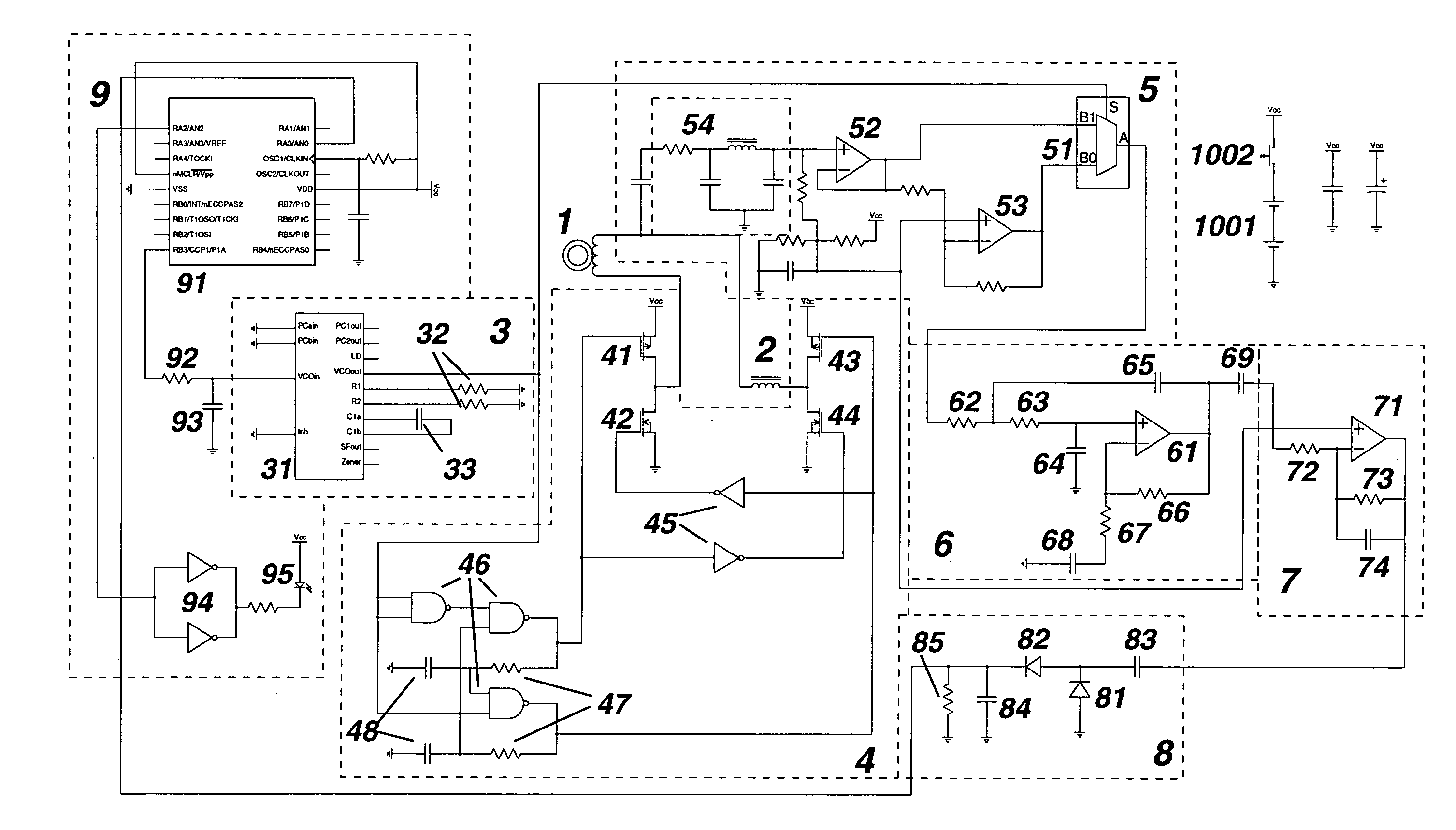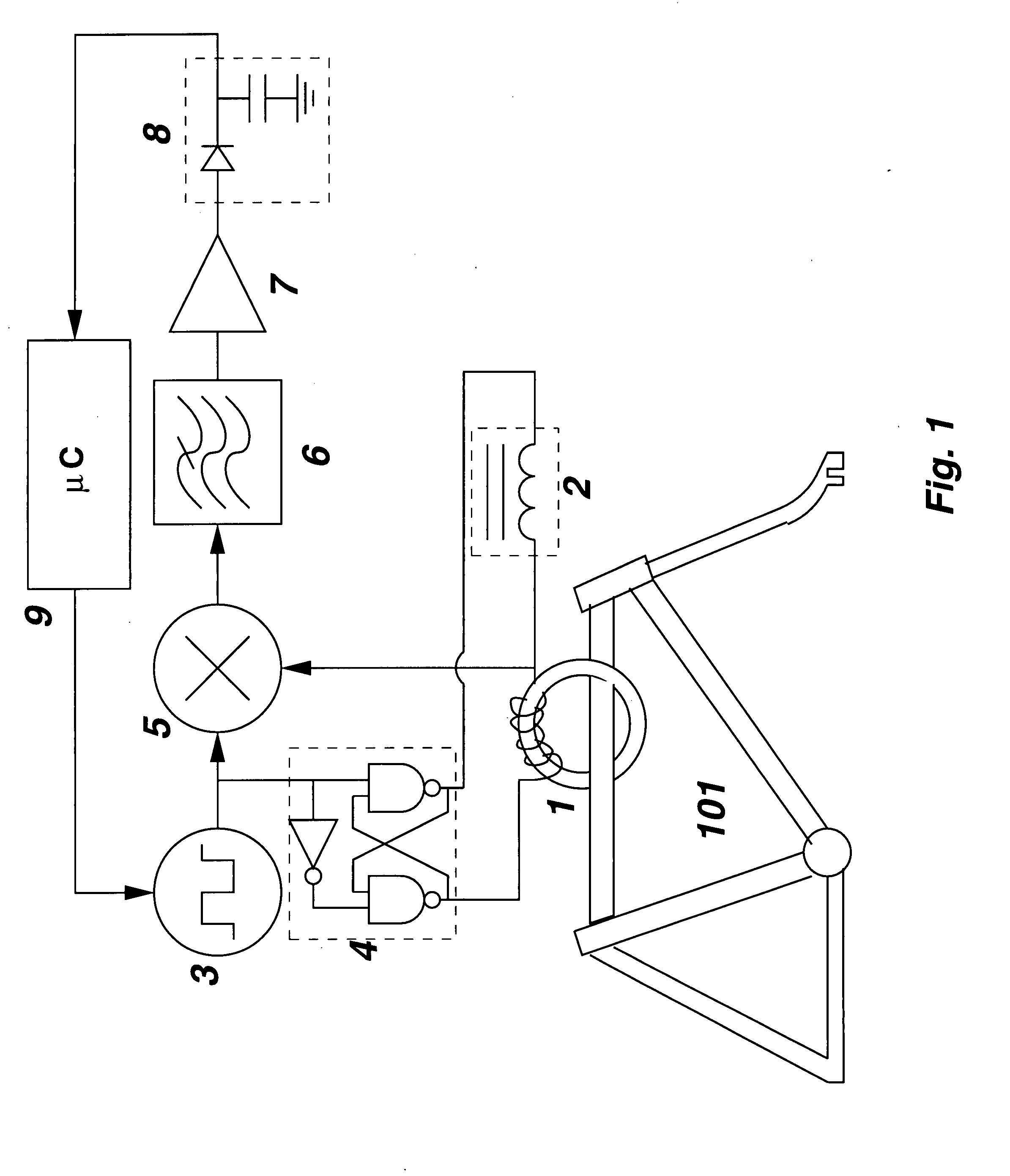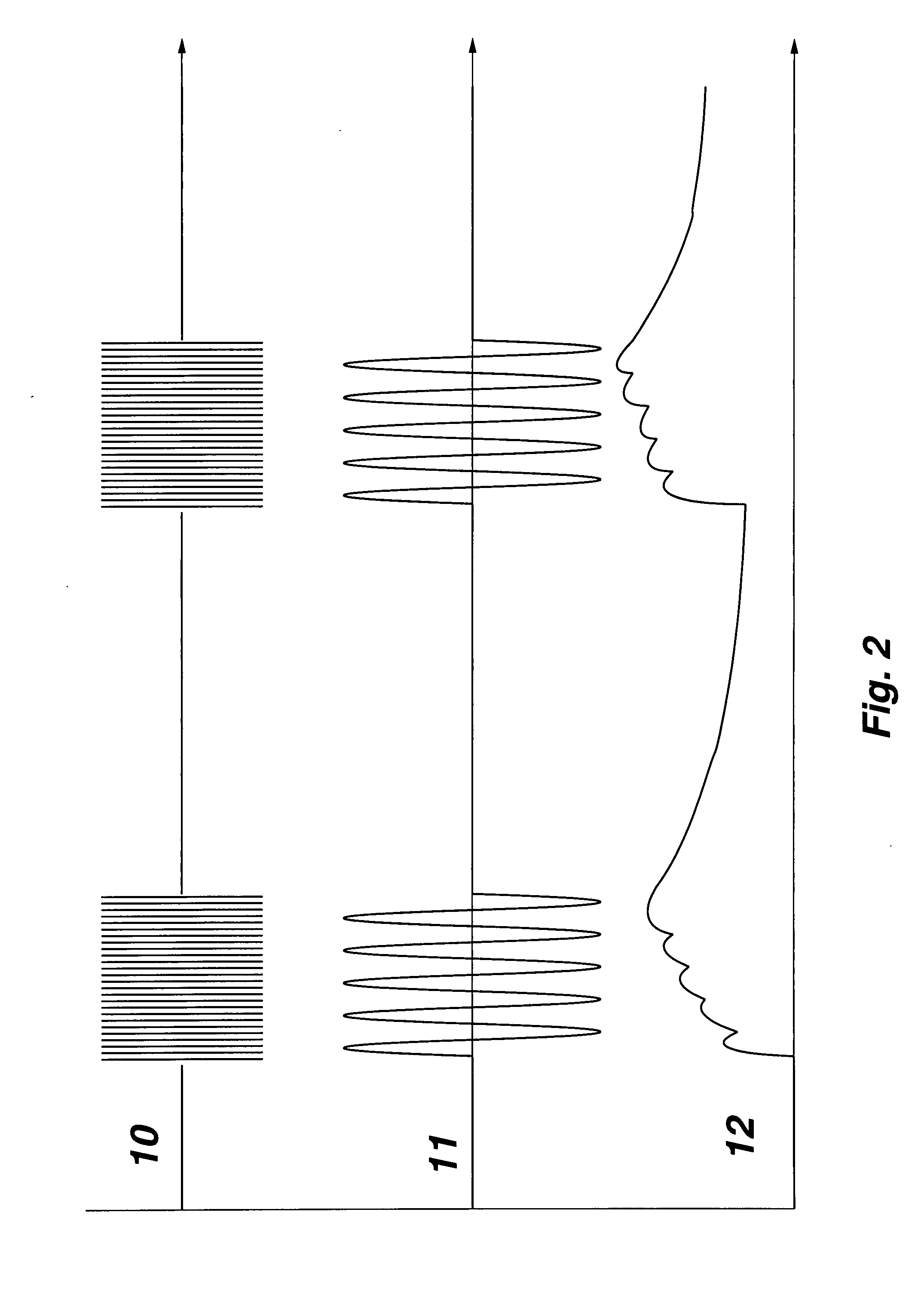Device for activating inductive loop sensor of a traffic light control system
a technology of inductive loop and traffic light control, which is applied in the direction of traffic control supervision, mechanical actuation of burglar alarms, instruments, etc., can solve the problems of difficulty in accommodating small vehicles such as bicycles and motorcycles, and the cost of visual systems may not be justified. , to achieve the effect of convenient adjustmen
- Summary
- Abstract
- Description
- Claims
- Application Information
AI Technical Summary
Benefits of technology
Problems solved by technology
Method used
Image
Examples
Embodiment Construction
[0027]FIG. 1 shows a block diagram of an exemplary embodiment of the invention. Transformer 1 serves to both carry the high-power output signal being sent to the bicycle frame, as well as to transfer the much weaker signal emitted by the sensor loop back to the activation electronics. Balanced drive circuitry 4 takes the signal from VCO 3, which is constrained to have a frequency covering all the expected operating frequencies of loop sensors (typically 20 kHz-200 kHz) and applies it to both the primary winding of transformer 1 and inductor 2. Transformer 1 consists of approximately 8 turns of copper foil wound on a split toroidal ferrite, approximately 2 inches in overall diameter. It has been found that a practical value for the inductance as measured at the primary winding of transformer 1 is 50 microhenries. Thus, the magnetization inductance of transformer 1 should be substantially larger than this value, so that maximal current is transferred into vehicle frame 101. Inductor 2...
PUM
 Login to View More
Login to View More Abstract
Description
Claims
Application Information
 Login to View More
Login to View More - R&D
- Intellectual Property
- Life Sciences
- Materials
- Tech Scout
- Unparalleled Data Quality
- Higher Quality Content
- 60% Fewer Hallucinations
Browse by: Latest US Patents, China's latest patents, Technical Efficacy Thesaurus, Application Domain, Technology Topic, Popular Technical Reports.
© 2025 PatSnap. All rights reserved.Legal|Privacy policy|Modern Slavery Act Transparency Statement|Sitemap|About US| Contact US: help@patsnap.com



